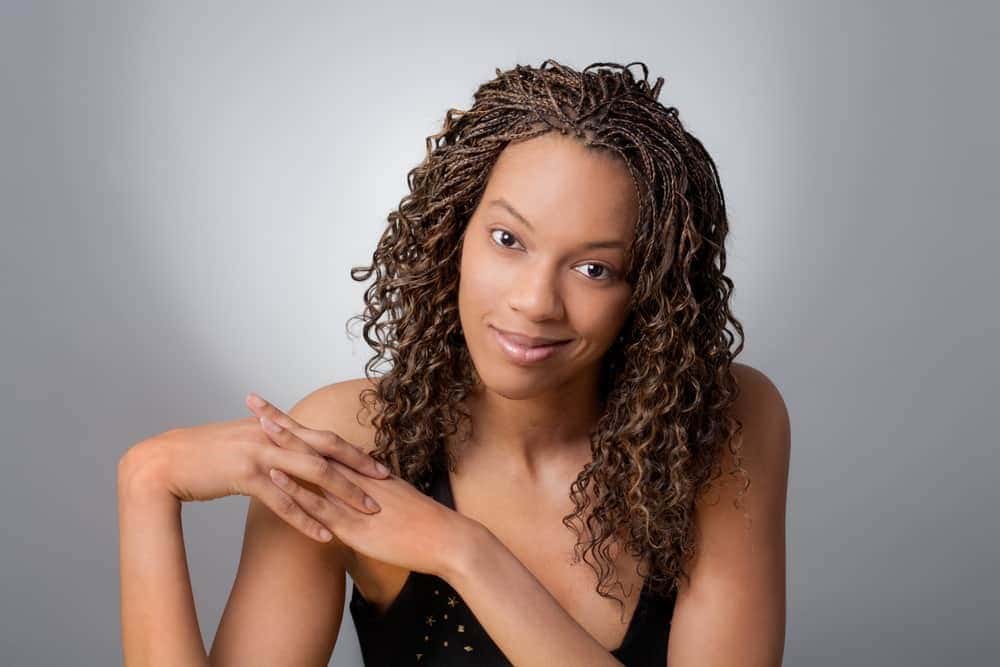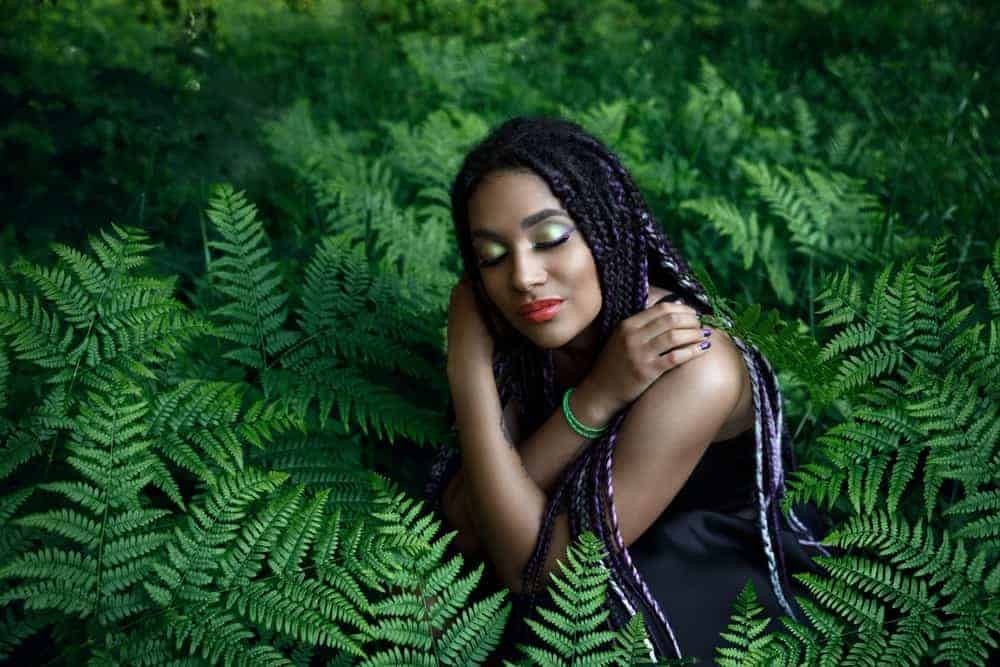When it comes to tree braids, many African-American and black women rely on professional salon services. This is because these hairstyles offer a unique blend of style and practicality. Tree braids can last for an extended period while keeping natural hair fully protected. They’re particularly popular during the summer months when they allow for airflow around the scalp, keeping the head cool and breezy.
With so many options available, it’s essential to consider several factors before purchasing hair for tree braids. These include the type of hair, its quality, and the level of maintenance required. While synthetic and human hair are both popular choices, each has its own advantages and disadvantages. For those new to tree braids, it’s crucial to understand how to install, maintain, and remove them properly.
In this article, we’ll explore the best types of hair for tree braids, including top-rated options like FreeTress Jumbo Braiding Hair and ZSF Brazilian Hair.
Important Factors To Consider When Buying Hair for Tree Braids
When it comes to achieving the perfect tree braids, the type of hair required depends solely on the desired style. To determine the best option for your look, read on to explore the various possibilities.
What Are Tree Braids?
Best Types of Hair for Tree Braids
While considering hair extensions to create a stunning tree braid look on cornrowed hair, two primary options emerge: synthetic and human. Here’s a breakdown of the key differences between these choices:Synthetic extensions offer an affordable solution, with a wide range of textures and colors available.
However, they have limitations when it comes to styling – most types can’t withstand heat from curling or straightening irons, and their lifespan is relatively short compared to human hair options. Human hair extensions, on the other hand, provide unparalleled versatility in terms of styling. They can be curled, straightened, braided, or styled in countless ways without any restrictions. This flexibility makes them a top choice for many.
However, the significant drawback is their hefty price tag – a major investment that may require some sacrifice.
Professional vs. DIY Installation
While some individuals may feel comfortable taking on the task themselves, installing tree braids is a process that can be successfully undertaken by anyone with the right level of hairstyling expertise. For those who possess confidence in their abilities, buying and putting in tree braids can be achieved through a series of straightforward steps. On the other hand, for those who lack experience or are unsure about attempting this style, seeking professional guidance is highly recommended.
In such cases, it’s essential to find a salon with experienced stylists who have a proven track record of working with both cornrows and tree braids. This ensures that you receive the best possible results and minimizes the risk of any potential issues or complications.
Top 5 Best Hair for Tree Braids 2024
Best Overall: FreeTress Jumbo Braiding Hair
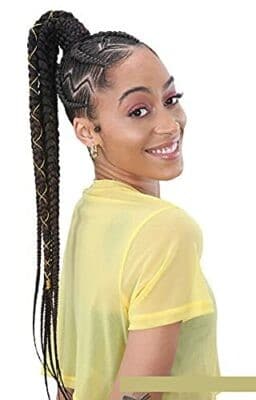
The allure of FreeTress Jumbo Braiding Hair lies in its exceptional softness, making it a joy to work with. This synthetic weave is designed for effortless braiding into natural hair, requiring minimal manipulation. The product’s pre-stretched quality simplifies the installation process, while its three bundled lengths (each approximately 28 inches) cater to various styling needs. When paired with afro or curly textured hair, this hair creates a seamless and natural-looking finish.
While it may not be suitable for all hair types, the softness of FreeTress Jumbo Braiding Hair is undeniable, making the braiding process quick and easy on the fingers. However, some users may encounter issues with tangling and itchiness, particularly when handling the product straight out of the package.
Best Premium: FreeTress Deep Twist Braiding Hair
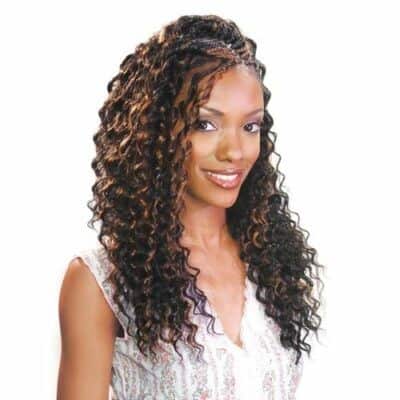
Freetress Deep Twist Braiding Hair offers unparalleled versatility, boasting not one but two packaging options and a staggering twenty color choices. This impressive array of possibilities allows you to craft the hairstyle of your dreams. The hair itself is 22 inches in length, making it easy to install into your natural locks and offering ample opportunity for customization. Whether you prefer a shorter or longer look, Freetress Deep Twist Braiding Hair gives you the freedom to experiment.
In terms of practicality, the synthetic material used in this product makes installation a breeze, while the clip-in design ensures a secure hold. However, it’s essential to note that regular maintenance is necessary to keep your braids looking their best. Despite this requirement, many users find the effort well worth the stunning results.
Some notable advantages of Freetress Deep Twist Braiding Hair include its ease of installation into natural hair, the light and bouncy texture it creates, and the abundance of color options available. On the other hand, some users may encounter issues with shedding and tangling, as well as potential allergic reactions for those with sensitive skin.
Best Budget: ZSF Brazilian Hair
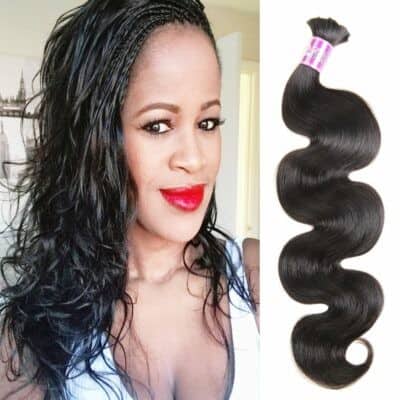
We adore ZSF Brazilian Hair for its extensive range of natural hair options, including various lengths. This flexibility enables customers to craft the perfect, multi-dimensional look. As a result, we’ve given it an Editor’s Rating. Key Highlights:• Color: Natural Black• Material: Human• Installation Type: Sew-InZSF Brazilian Hair offers a stunning selection of human locks in lengths ranging from 14” to 28”.
This means customers can choose the perfect combination for their desired look, whether it’s layered or not. The hair itself is remarkably soft and wavy, making it a breeze to install on your natural hair. Nevertheless, those with thinner natural hair might find that the extensions slip more frequently after installation.
Pros:• Super-soft texture for effortless installation and styling• Dedicated customer service providing timely communication• Low shedding rate compared to other brandsCons:• Some customers may experience increased slippage post-installation
Hannah Deep Weave Bulk Braiding Hair
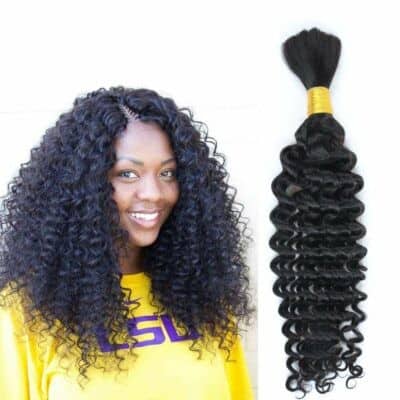
One of the standout features of Hannah Deep Weave Bulk Braiding Hair is its versatility. Like ZSF Brazilian Hair, it offers a range of length options to suit individual preferences. The curly and soft texture makes installation into natural hair easy, resulting in a light and bouncy finish that customers will love. This human hair can be colored, straightened, or permed for added styling possibilities. Available in 50g or 100g packs, the lengths range from 16 inches to 26 inches.
Furthermore, the packaging can be customized to create layered looks. While this product has its advantages, it does have some drawbacks, such as shedding easily with certain hair types and styles.
Deep Bulk Braiding Hair
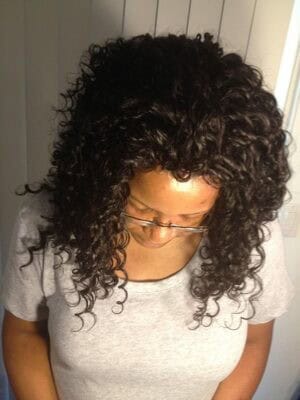
We’re thrilled with the enduring quality of Deep Braiding Bulking Hair. One of its standout features is its impressive longevity after installation and styling. The blend of mostly human hair with a small percentage of synthetic material allows for a versatile range of lengths, from 18 to 20 inches. What’s more, we adore the relaxed, spiral curls that form at the ends, creating a beautiful, effortless look.
While it’s not 100% human hair (approximately 15-20% synthetic), its pros far outweigh any minor drawbacks.
Buying the Best Hair for Tree Braids
When selecting hair for tree braids, it’s essential to take several key factors into account. In this section, we’ll delve into the crucial considerations that will help you make an informed decision and find the perfect hair for your tree braids. Additionally, we’ll touch on some supplementary points to keep in mind before making a purchase, ensuring that you get the best possible results for your specific needs.
The History of Tree Braids
Tree braiding’s foundation lies in cornrows, a style with ancient roots dating back to approximately 3,000 BCE. The Nok civilization, around 500 BCE, wore cornrows as a symbol of their cultural, social, and religious values. This hairstyle became an integral part of African heritage, only to disappear during slavery when enslavers forcibly shaved the heads of enslaved Africans.
However, once freed, African people reintroduced cornrows into their daily lives, adapting it to fit their new circumstances. The hairstyle gained popularity again in the 1960s alongside the Black Power movement, serving as a means to differentiate between older and newer members. Today, cornrows continue to be a staple in African cultures, worn to convey one’s identity, marital status, age, and religious beliefs.
Notably, it serves as the precursor to tree braids, which has further solidified its significance.
Synthetic vs. Human Hair for Tree Braids
When it comes to extensions for tree braids, there are only two primary options: synthetic and human. While the majority of individuals opt for synthetic due to its affordability and vast array of color and texture choices, those willing to invest a bit more can reap greater benefits with human hair. This premium material allows for styling using heat tools such as curling or straightening irons after installation, offering a higher level of versatility and customization.
How To Install Tree Braids
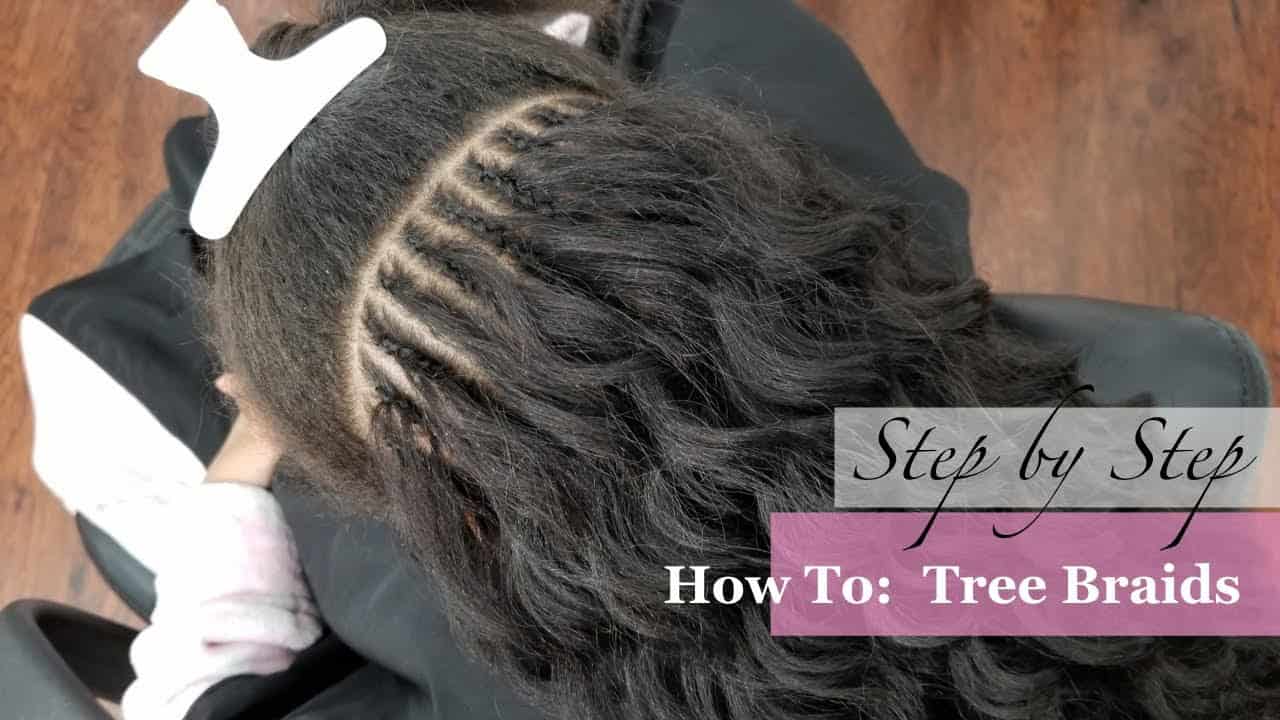
To create a stunning tree braid hairstyle at home, follow these five easy steps once you’ve acquired the right hair extensions for your locks: First, prep your scalp by applying a nourishing treatment like shea butter to ensure healthy and protected skin. Next, section off a small part of your hair along the hairline, no wider than an inch, and secure it with a clip. Then, begin forming a cornrow braid at the hairline, gradually incorporating the extension hair into the braid as you go.
Continue braiding until the extensions are securely attached to your head, leaving most of them unbraided and flowing freely. Finally, repeat this process for all sections of your hairline until you’ve achieved the desired look.
How To Maintain and Care for Your Tree Braids
To keep your tree braids healthy and looking their best, regular maintenance is crucial. This includes scheduling appointments with your stylist every 8-10 weeks to rebraid or remove the braids as needed. If your braids become loose or start falling out, it’s essential to address the issue promptly. For human hair tree braids, you can follow a standard hair care routine, including shampooing and conditioning as you would with your natural locks.
If you’re working with synthetic hair, things are a bit different. You’ll want to wash your braids every 1-2 weeks using a diluted gentle shampoo (baby shampoo works well) mixed with cold or room temperature water. Between washes, use a detangling spray to moisturize and make combing easier. Don’t neglect scalp care during this time. When washing around the braids, be gentle to avoid irritating the skin.
To prevent messiness along the scalp area, apply a waterless shampoo or use an astringent like African Pride Black Castor Miracle, Girl + Hair Under Hair Care, or DevaCurl Buildup Buster.
How To Remove Tree Braids
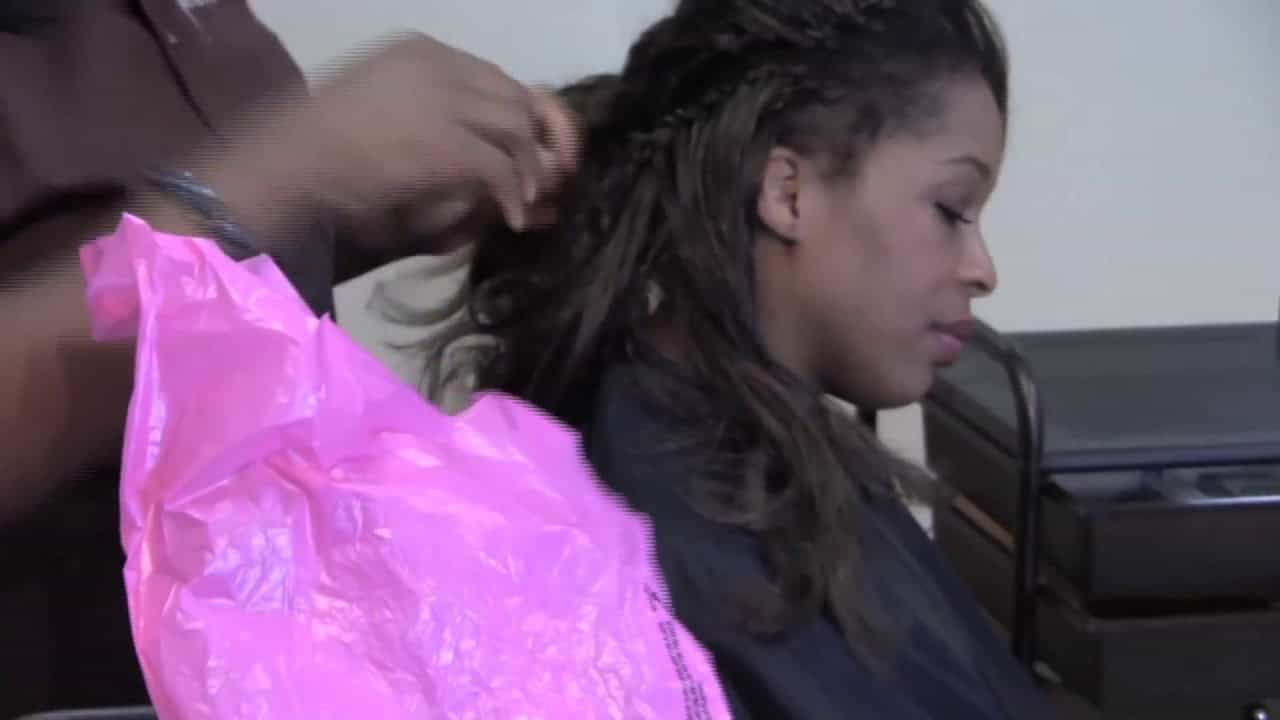
For those who prefer a more hands-on approach, removing tree braids can be a manageable task when broken down into manageable steps. To ensure a safe and successful removal process, it’s essential to prioritize gentle handling of your natural hair. Here’s a step-by-step guide to help you achieve this: First, gently detangle the affected section with a wide-toothed comb, taking care not to tangle or knot your natural hair further.
Next, identify the braid you’d like to remove and secure the remaining sections out of the way using clips or bobby pins. When dealing with the chosen braid, start by cutting the extension far away from the original knot site, leaving a small amount of natural hair as a reference point. Following this, apply a detangling spray to facilitate the process.
With the braid now primed for removal, work your way up from the bottom, carefully unraveling each section until you’ve successfully removed the entire tree braid. Repeat these steps for each remaining braid, taking care to handle your natural hair with gentle attention throughout the process.
FAQs on Hair for Tree Braids
Tree braids, a popular protective hairstyle, can last up to six weeks when properly maintained. The name ‘tree braids’ stems from their resemblance to the shape of a tree once installed. While often confused with microbraids, tree braids actually employ the cornrow method, setting them apart from other types of braiding styles.
One of the benefits of tree braids is their versatility – they can withstand various activities like working out, swimming, showering and more, as long as proper care is taken to maintain their integrity.
Final Thoughts
When it comes to achieving a stunning tree braid style, whether you’re seeking relief from the summer heat or simply looking to mix things up, the right type of hair is crucial. With this essential knowledge under your belt, you’ll be well-equipped to rock a glamorous new look that exudes confidence and poise.
